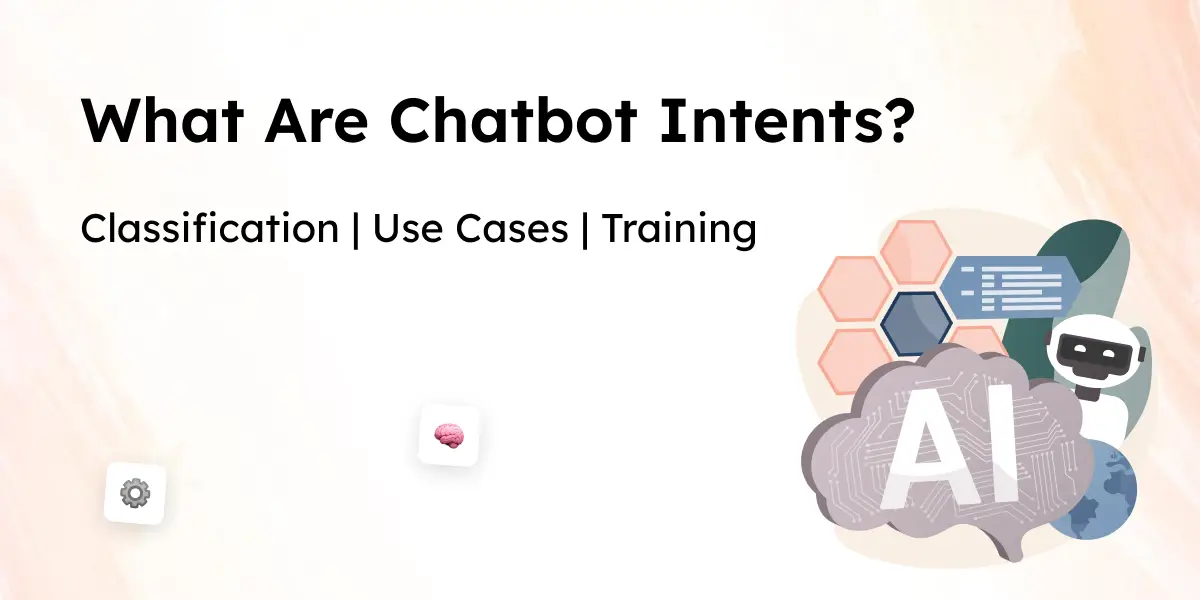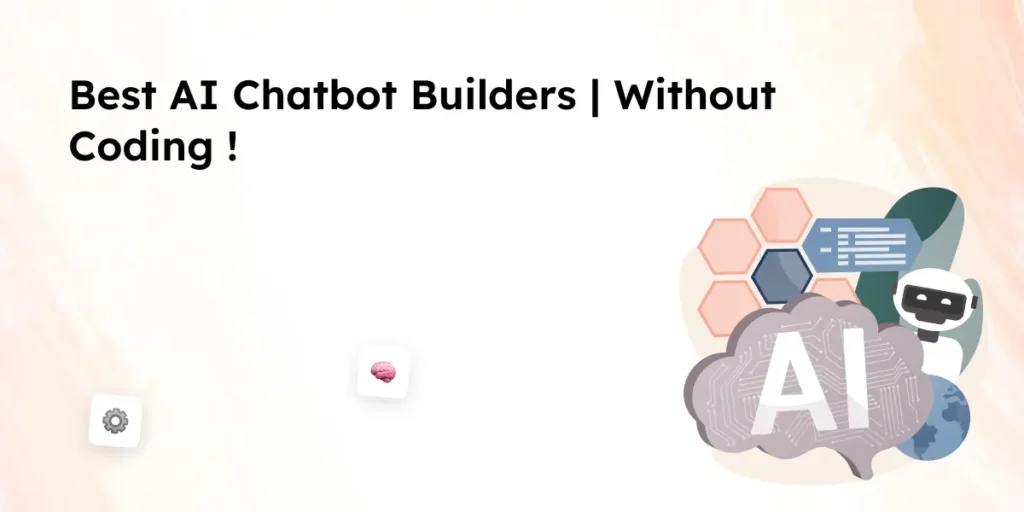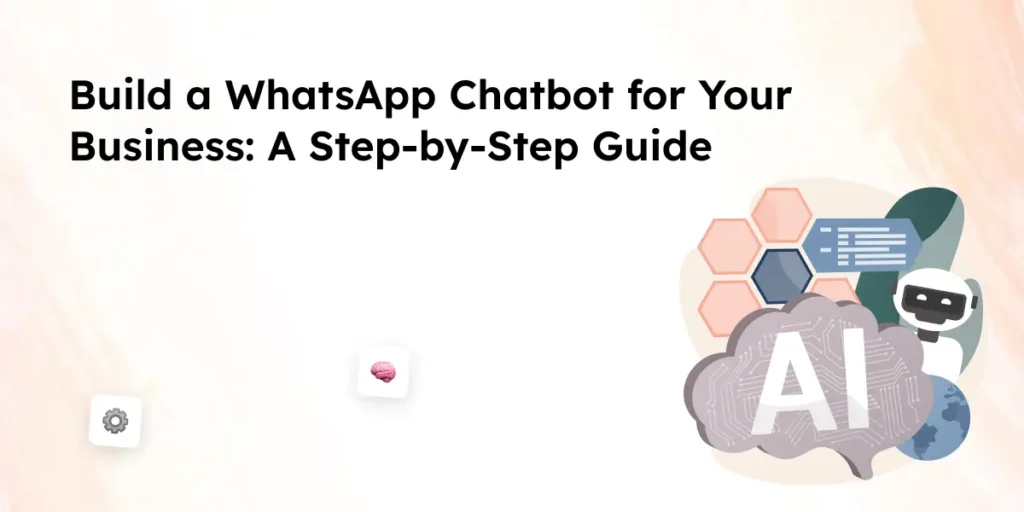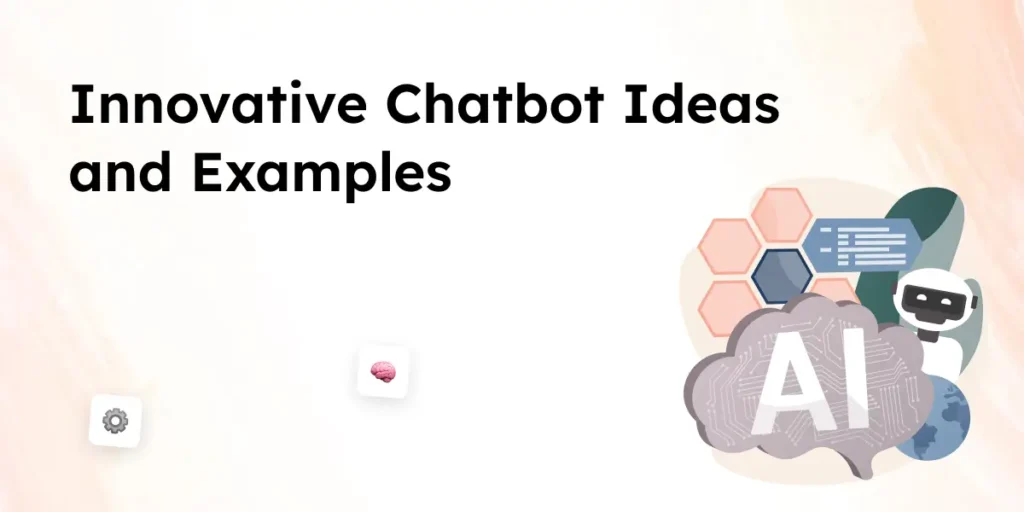Chatbots use AI to recognize user intent and respond appropriately, improving customer interactions across industries. They rely on natural language processing, machine learning, and entity recognition to classify user messages into intent categories and select relevant responses. Chatbot intent classification helps businesses automate responses, enhance personalization, and boost efficiency in handling customer inquiries. By using technology and nlp, chatbots can categorize interactions, understand customer needs, and provide seamless support. Businesses can train their chatbot to improve accuracy, ensuring better responses and an engaging conversation experience.
What Is a Chatbot Intent
A chatbot intent refers to the purpose behind a user’s message. When a user interacts with a chatbot, the bot needs to understand the intent of the message to provide an appropriate response. Chatbots work by recognizing patterns in user messages and classifying them into predefined intent categories.
- Chatbot intent helps in determining what a user wants from the conversation.
- Chatbots categorize user messages and match them with relevant responses.
- AI chatbot solutions use natural language processing and machine learning to improve intent recognition.
For example:
- If a user asks, “Where is my order?”, the chatbot identifies it as an order tracking intent.
- If a customer types, “How can I reset my password?”, the chatbot recognizes a password reset intent.
Understanding chatbot intent classification is essential for improving chatbot functionality. By using machine learning and natural language processing, an AI chatbot can:
- Identify intents and analyze user messages accurately.
- Ensure the intent is matched with the most relevant information.
- Automate responses for seamless customer support.
An intent-based chatbot in a similar way to a human agent can handle multiple types of customer inquiries efficiently. The difference between intent and entity plays a crucial role in chatbot performance:
- Intent refers to what the user wants to achieve.
- Entities used in chatbot development provide additional details for better accuracy.
- Example: In the query “Book a flight to New York”, the intent is booking a flight, while the entity is New York.
To improve chatbot accuracy, businesses should:
- Train their chatbot using a dataset of real user interactions.
- Continuously refine chatbot needs based on analytics.
- Use AI-powered chatbots that adapt to new intents over time.
The ability to identify intents accurately helps customer service chatbots enhance user interactions and provide better support.
How Chatbots Work with Intent-Based Classification
Chatbots work by recognizing user messages and matching them with predefined intent categories. This process, known as chatbot intent classification, helps chatbots to understand customer needs and provide accurate responses. A chatbot’s ability to recognize intents depends on its fundamental features. AI chatbot solutions use natural language processing and machine learning to identify user intent and categorize different interactions. Steps in Intent-Based Chatbot Functionality
- User message input
- A user types a query into the chatbot, such as “Track my order” or “How do I reset my password?”
- Chatbot identifies the intent of the message
- The chatbot analyzes the text to determine what the user wants.
- It uses NLP and intent detection to match the message with a predefined intent.
- Entities are extracted
- If additional details are needed, entity recognition helps extract relevant information.
- Example: In “Book a flight to London”, the intent is booking a flight, while the entity is London.
- Intent is matched with the chatbot’s response
- The chatbot selects the best response from its knowledge base.
- If no clear intent is found, the chatbot may ask follow-up questions or connect the user to live chat support.
- Chatbot delivers the response
- The user receives a relevant reply based on their intent and any entities provided.
- AI-powered chatbots improve over time by learning from analytics and user interactions.
Benefits of Intent-Based Classification in Chatbots
- Helps categorize customer inquiries into structured responses.
- Enables chatbots to assist customers across a wider range of requests.
- Reduces the need for human intervention by automating frequently asked questions.
- Enhances chatbot functionality by allowing AI chatbot solutions to improve personalization.
- Provides seamless customer support and reduces response times.
Intent-based chatbot solutions are widely used in ecommerce, banking, and customer service chatbots to improve efficiency. By using natural language processing and machine learning, businesses can train their chatbot to recognize new intents, improving chatbot development and customer interactions.
Types of Chatbot Intents – Categorizing User Requests
Chatbots rely on different intent categories to handle various types of user inquiries. Proper chatbot intent classification ensures that the chatbot identifies the intent of the message and provides an accurate response. AI-powered chatbots categorize customer interactions into predefined intent-based groups, improving chatbot functionality and customer support.Customer Service Intents
- Used in customer service chatbots to handle common customer inquiries.
- Examples: “Where is my order?”, “How do I return a product?”, “Reset my password.”
- Helps automate responses, reducing human workload.
Transactional Intents
- Chatbots can assist customers with transactions such as purchases, bookings, or payments.
- Examples: “Book a flight to New York”, “Pay my bill”, “Reserve a table for two.”
- Extracts entities like location, date, and time to process requests.
Information-Seeking Intents
- Users ask for general information about products, services, or policies.
- Examples: “What are your store hours?”, “Tell me about your refund policy.”
- AI chatbots provide instant responses by pulling answers from the knowledge base.
Sales and Marketing Intents
- Used in ecommerce chatbots to recommend products or services.
- Examples: “Show me the latest deals”, “Do you have a discount code?”
- Helps businesses reach their goals by improving sales interactions.
Appointment Scheduling Intents
- AI chatbot solutions automate booking processes.
- Examples: “Schedule an appointment for Friday at 2 PM”, “Reschedule my meeting to next Monday.”
- Uses entity recognition to identify dates and times.
Live Chat Escalation Intents
- When chatbots work alongside human agents, they categorize inquiries that require live chat support.
- Examples: “I need to talk to an agent.”, “Connect me with customer support.”
- Ensures seamless transitions between bots and human representatives.
Small Talk and Casual Intents
- Enhances an engaging conversation experience by handling casual interactions.
- Examples: “Hello!”, “How are you?”, “Tell me a joke.”
- Helps make AI-powered chatbots feel more interactive.
Why Intent Categorization Matters
- Chatbots to understand user interactions more effectively.
- Enables chatbots to categorize inquiries for better response accuracy.
- Helps businesses automate frequently asked questions.
- Improves intent detection for better customer service experiences.
By identifying different intent categories, businesses can train their chatbot using a dataset of real user messages. This improves chatbot development and ensures that the chatbot needs are continuously refined.
Benefits of Chatbot Intent
Chatbots have become an essential tool for businesses looking to improve customer support and automate repetitive tasks. By understanding user intent, AI-powered chatbots can categorize customer inquiries, streamline chatbot functionality, and provide faster responses. Businesses use chatbots to enhance efficiency, reduce costs, and improve customer interactions.Increased efficiency in customer support
- AI chatbot solutions automate responses to frequently asked questions.
- Customer service chatbots handle multiple customer inquiries simultaneously.
- Reduces workload for human agents, allowing them to focus on complex issues.
Improved personalization in responses
- Chatbots understand customer needs by analyzing user interactions.
- AI intent recognition enables chatbots to provide relevant recommendations.
- Personalization leads to better user engagement and customer satisfaction.
Seamless automation of repetitive tasks
- Chatbot automation speeds up response times for common queries.
- Businesses reach their goals by automating booking, order tracking, and FAQs.
- Reduces the need for live chat agents to handle routine tasks.
Better accuracy with intent recognition
- AI-powered chatbots use machine learning to identify intents accurately.
- Intent detection helps match user messages with the most relevant responses.
- Chatbots work by learning from past interactions and improving over time.
Scalability for handling high volumes of inquiries
- Businesses with a high number of guests or customer inquiries can rely on chatbots.
- Chatbots can also manage multiple conversations at once without delays.
- Helps companies provide 24/7 support without increasing customer service costs.
Data-driven insights and analytics
- Chatbot analytics help businesses understand customer intent and behavior.
- AI chatbot solutions track new intents to refine chatbot development.
- Provides actionable insights into user interactions and chatbot performance.
Enhanced user experience with conversational AI
- Chatbots enable engaging conversation experiences that mimic human interactions.
- Intent-based chatbot technology improves chatbot needs over time.
- Customers can talk to an intent-based chatbot in a similar way to a live agent.
By using AI-powered chatbots, businesses can automate responses, increase efficiency, and improve customer satisfaction. The ability to categorize and identify intents ensures that chatbot responses align with user expectations.
How to Train Your Chatbot for Better Intent Recognition
To improve chatbot functionality, businesses need to train their chatbot using real user interactions. Intent detection and chatbot intent classification play a key role in ensuring the chatbot identifies the correct intent of the message. AI-powered chatbots use machine learning and natural language processing to categorize inquiries, automate responses, and enhance user interactions.Define intent categories
- Identify intents that your chatbot needs to handle.
- Categorize customer inquiries into predefined chatbot intent classifications.
- Consider different intent types such as customer support, sales, and live chat requests.
Collect a dataset of user messages
- Gather real user interactions to train your chatbot.
- Include frequently asked questions and transactional queries.
- Ensure the chatbot works with a wider range of user inquiries.
Use natural language processing for intent detection
- Implement NLP to help chatbots understand customer intent.
- Enable chatbots to process user messages in a conversational way.
- Utilize machine learning to improve chatbot needs and response accuracy.
Annotate data for chatbot training
- Label different intent categories for accurate chatbot intent classification.
- Identify intents and entities used in chatbot interactions.
- Ensure that intent is matched correctly with relevant chatbot responses.
Test and refine chatbot responses
- Run tests to see how well the chatbot identifies intents.
- Use chatbot analytics to track accuracy and improve chatbot development.
- Train your chatbot continuously to recognize new intents over time.
Integrate chatbot with a knowledge base
- Improve chatbot functionality by connecting it to a knowledge base.
- Allow chatbots to assist customers with FAQs and self-service options.
- Enhance chatbot automation by enabling self-learning capabilities.
Monitor chatbot performance and make adjustments
- Use chatbot analytics to track intent-based chatbot performance.
- Identify any gaps in intent detection and adjust chatbot needs accordingly.
- Train the chatbot regularly to adapt to new customer interactions.
By following these steps, businesses can improve chatbot functionality and ensure chatbots understand customer intent accurately. AI-powered chatbots can also learn from past user interactions, making them more effective over time.
Real-World Applications of Chatbot Intent Recognition
Customer Support Chatbots
- AI chatbots handle customer inquiries by recognizing intent and providing automated responses.
- Chatbots can assist customers with frequently asked questions and troubleshooting issues.
- Businesses use chatbots to reduce response times and improve customer interactions.
Ecommerce Chatbots
- AI chatbot solutions help customers find products, check order status, and complete purchases.
- Intent-based chatbot classification allows chatbots to assist with payment issues and return requests.
- Chatbots enable businesses to provide 24/7 support without relying on human agents.
Live Chat Assistance
- Chatbots categorize customer messages and escalate complex queries to human agents.
- AI chatbot solutions improve live chat experiences by filtering user messages based on intent.
- Intent-based chatbot automation allows businesses to streamline customer service operations.
Sales and Lead Generation
- AI-powered chatbots identify user intent and recommend relevant products or services.
- Chatbots work with CRM systems to qualify leads based on customer intent.
- Businesses reach their goals by using chatbots to understand customer preferences and drive conversions.
Virtual Assistants for Appointment Scheduling
- Chatbots automate scheduling tasks by recognizing appointment booking intents.
- AI chatbot intent recognition allows customers to schedule meetings without human intervention.
- Chatbots categorize and confirm bookings, reducing the need for manual input.
Knowledge Base Integration
- AI-powered chatbots pull information from a knowledge base to answer user questions.
- Chatbot intent classification ensures that the chatbot provides relevant knowledge base articles.
- Businesses use chatbots to improve customer experience by offering instant self-service options.
Personalized User Interactions
- AI chatbots use personalization to provide relevant suggestions based on user intent.
- Chatbots can also improve customer retention by offering tailored recommendations.
- AI chatbot intent recognition enables businesses to engage users in a more conversational way.
By utilizing chatbot analytics, businesses can track chatbot performance, refine chatbot needs, and improve chatbot development over time. AI-powered chatbots help automate customer interactions and create an engaging conversation experience.
The Future of Intent-Based Chatbots
Chatbots are evolving rapidly as AI-powered solutions become more advanced. With improvements in machine learning, natural language processing, and intent detection, chatbots can now handle more complex interactions and improve customer experience. Businesses are leveraging chatbots to understand customer needs better, automate responses, and deliver seamless support.
Key Trends Shaping the Future of AI Chatbots
- Improved intent recognition with AI
- AI chatbot solutions are becoming more accurate in identifying user intent.
- Generative AI enhances chatbot functionality by enabling smarter responses.
- Chatbots work by continuously learning from user interactions and chatbot analytics.
- Better personalization in chatbot interactions
- AI-powered chatbots improve engagement by providing personalized responses.
- Chatbots understand customer preferences and adjust their responses accordingly.
- Personalization leads to increased efficiency in customer service interactions.
- More advanced natural language processing capabilities
- AI chatbots utilize machine learning to enhance intent detection.
- Technology and NLP advancements allow chatbots to process a wider range of messages.
- Chatbots to understand user messages in a conversational way similar to how humans communicate.
- Integration with multiple business platforms
- AI chatbot solutions are integrating with CRM, eCommerce, and knowledge base systems.
- Chatbots can also provide seamless customer support across different channels.
- Businesses reach their goals by automating interactions through chatbot automation.
- Smarter AI chatbot development
- Chatbot development is becoming easier with drag-and-drop platforms.
- AI chatbot intent classification ensures chatbots provide accurate responses.
- Businesses train their chatbot using real datasets to improve chatbot needs.
- Advanced chatbot types for specialized tasks
- Customer service chatbots handle routine inquiries and live chat escalations.
- Virtual assistants help users manage tasks and automate scheduling.
- AI-powered chatbots assist with sales, marketing, and customer interactions.
- Better analytics and real-time improvements
- Businesses use chatbot analytics to refine chatbot functionality.
- AI chatbot solutions track new intents and update chatbot responses dynamically.
- Improved chatbot development ensures chatbots adapt to changing customer needs.
Chatbots can also help businesses improve efficiency by automating repetitive tasks. The ability to categorize intent, extract entities, and provide real-time responses makes chatbots a powerful tool for any industry.
Conclusion – Why Chatbot Intents Matter for Businesses
Understanding chatbot intents is essential for businesses looking to automate customer service, improve user interactions, and increase efficiency. AI-powered chatbots can analyze user messages, categorize inquiries, and provide accurate responses based on intent detection. By leveraging chatbot automation, businesses can improve customer support, streamline operations, and offer a better overall experience.
Key takeaways:
- Intent-based chatbot solutions help categorize and automate customer inquiries.
- AI chatbots improve chatbot functionality through intent detection and entity recognition.
- Businesses use chatbots to enhance customer interactions and reduce human workload.
- Chatbot analytics provide insights to refine chatbot needs and improve chatbot development.
With continuous advancements in AI, chatbots will keep evolving to provide better personalization, improved intent detection, and smarter automation. Businesses that implement AI-powered chatbot solutions will benefit from increased efficiency and seamless customer support.
FAQs About Chatbot Intents
What is chatbot intent?
Chatbot intent refers to the goal or purpose behind a user’s message. AI chatbots categorize user inquiries into intent categories to provide accurate responses.
How does intent detection work in AI chatbots?
AI chatbots use natural language processing and machine learning to analyze user messages. The chatbot identifies the intent of the message and matches it with the most relevant response.
What’s the difference between intent and entity in chatbots?
Intent represents what the user wants to perform, while entities provide specific details related to that intent. For example, in “Book a flight to London,” the intent is booking a flight, and the entity is London.
How can I train my chatbot to identify intents accurately?
Businesses train their chatbot by collecting datasets of real user interactions, categorizing intent-based chatbot inquiries, and refining chatbot needs through chatbot analytics.
What are some examples of chatbot intents?
Common chatbot intents include order tracking, password reset, product recommendations, live chat support, and appointment scheduling.



